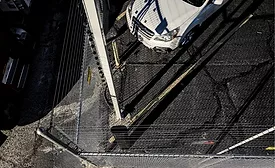Home » Keywords: » fencing
Items Tagged with 'fencing'
ARTICLES
As theft surges and budgets tighten, proactive security is emerging as a vital pillar of operational resilience
Read More
Integrated Solutions
The 6 challenges of securing large perimeters
Overcoming perimeter security challenges demands a holistic approach that integrates technology, personnel and processes to ensure a robust and effective security strategy.
October 5, 2023
Special Report
Securing the perimeter in manufacturing and distribution
With large campuses and high vehicle traffic, manufacturing and distribution facilities require a layered approach to securing the perimeter.
August 1, 2022
Sign-up to receive top management & result-driven techniques in the industry.
Join over 20,000+ industry leaders who receive our premium content.
SIGN UP TODAY!Copyright ©2025. All Rights Reserved BNP Media.
Design, CMS, Hosting & Web Development :: ePublishing





